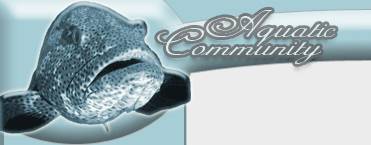Heartworm in dogs
Heartworm disease is a parasitic disease spread by mosquitoes. The heartworm organism - Dirofilaria immitis – goes through several life stages and need mosquitoes as host during one of the intermediate stages of its cycle. Heartworm is not only a problem for dogs, it can infected humans and many other animals, including wolves, coyotes, foxes, cats and sea lions. The name heartworm is derived from the fact that the adult worm will reside in heart of its host, which can lead to congestive heart failure.
Heartworm symptoms in dogs
During the 6 month long prepatent period – before the heartworm become mature – infected dogs will display no symptoms of heartworm infection at all. Even if you bring your dog to the vet, the currently available tests that can detect microfilariae and antigens will not be able to detect the heartworm during this stage.
In some dogs, migrating heartworms can take the wrong route and end up in the brain, in an artery in the leg, or in an eye and this can cause significant symptoms. The exact symptoms will depend on which organ that has become infested with heartworm larvae. Heartworm larvae in the eyes can for instance cause blindness, while heartworms in other parts of the dog’s body can cause lameness and seizures.
When the heartworm has matured, a lot of dogs will still show no signs of heartworm infection. Dogs with a sedentary lifestyle are loss prone to display symptoms of heartworm infection than very active dogs. If you look closely, you might find that an infected dogs seem to age faster than normal, but this is naturally very difficult for the dog owner to detect unless he keeps several dogs of the same age and breed. The increased aging speed is caused by the heartworm slowly damaging the lungs, liver and kidneys of the dog.
Very active dogs – and in dogs with a heavy infection – will usually start to show the classic symptoms of heartworm disease quite soon after the maturation of the heartworm. They will become exhausted much earlier than before, and they can also start coughing – especially when exercising. As the heartworm disease progresses, symptoms in dogs include fainting, coughing up blood, and serious weight loss. The final stage is congestive heart failure which is lethal.
Heartworm prevention and treatment for dogs
Canine heartworm is preventable and giving your dog chemoprophylaxis is a very good idea if you live in an area where heartworm is endemic. Puppies should receive their first dose when they are no older than 8 weeks. By giving your dog chemoprophylaxis you will not only prevent your own dog from catching heartworm, you will also reduce the reservoir population and help lowering the risk of catching heartworm for all dogs.
A lot of the most commonly used chemoprophylactics for heartworm in dogs contains macrocyclic lactones, such as ivermectin, moxidectin, milbemycin oxime, and selamectin. These drugs have been proven to have anthelmintic activity against microfilariae, 3rd and 4th stage larvae, and in some instances even be efficient against young adult heartworms. If you give your dog the prescribed doses at the right intervals, this heartworm treatment is virtually 100% effective against heartworm.
Before your start your dog on chemoprophylaxis, it should be tested for heartworm. If your dog has moderate to high microfilarial levels, it must be kept under careful supervision while being given the drugs.
Quite a lot of Collies are unusually sensitive to high doses of ivermectin, and the same is true for p glycoprotein deficient dogs. To be considered a high dose, the dose of ivermectin must exceed 16 times the minimum effective prophylactic dose.
Parasites in dogs: (click for more info)
Cheyletiellosis in dogs
Chiggers in dogs
Ear Mites in dogs
Fleas in dogs
Heartworm disease in dogs
Hookworms in dogs
Mange in dogs
Roundworm in dogs
Tapeworms in dogs
Ticks in dogs
Trichinosis in dogs
